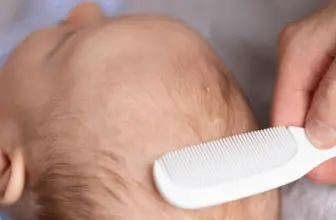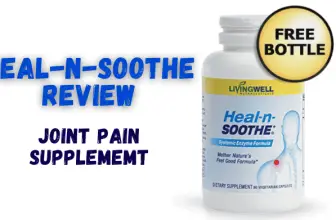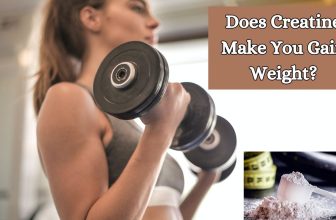Main Reasons for Feeling Lower Abdominal Pain When Squatting
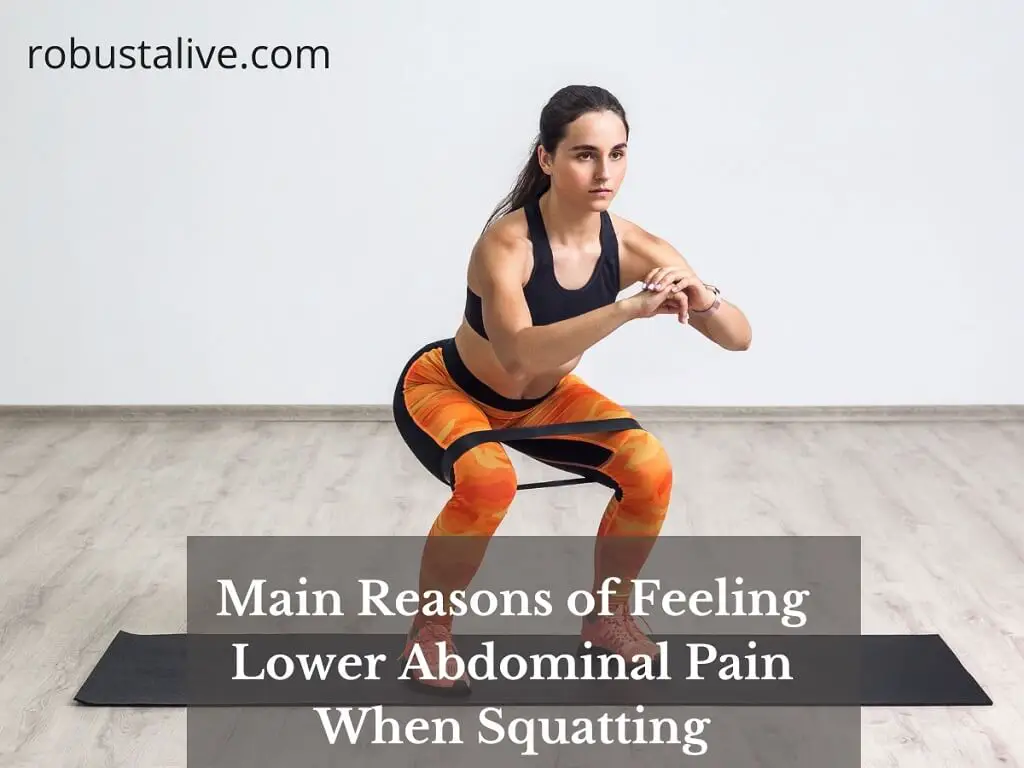
Every workout demands that you target a particular muscle group. If your specific muscle area hurts after the workout, that’s a win-win pain. However, some types of pain may indicate or be brought on by different things. In this article, you can learn about the Main Reasons for Feeling Lower Abdominal Pain When Squatting.
Why do I have Lower Abdominal Pain while Squatting?
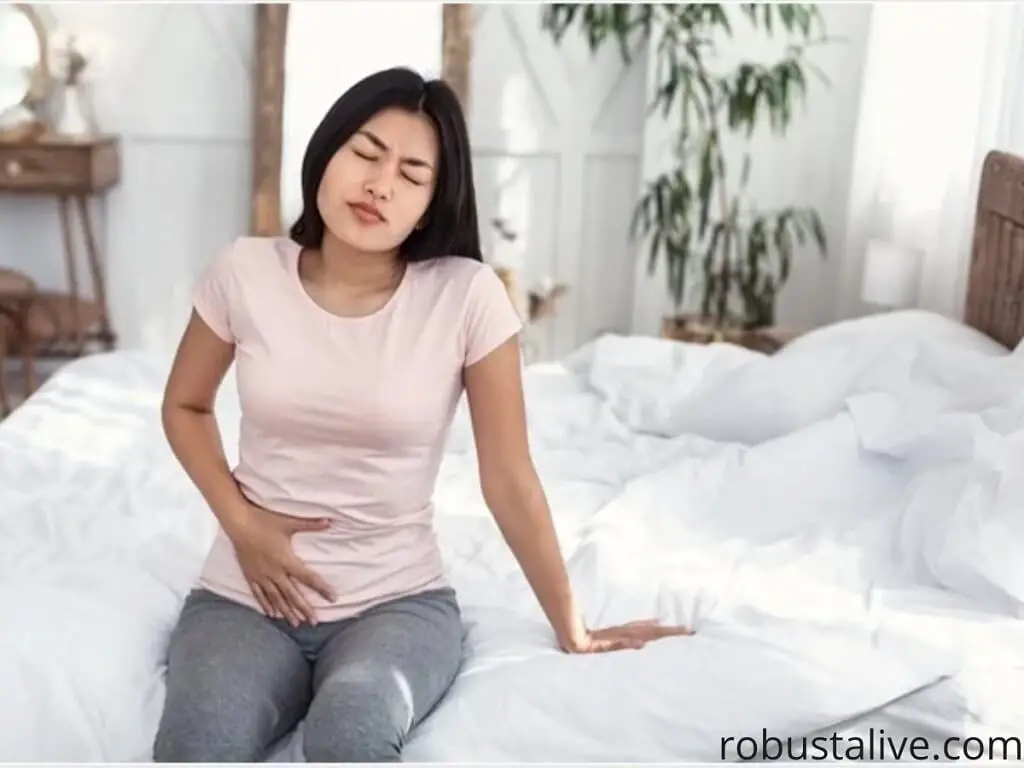
Photo Credit: robustalive.com
Hip flexors or even a pinched nerve may be to blame. If the pain is searing, a small tear in the abdominal wall may be the cause. Squatting incorrectly or without enough hip force could be a contributing reason. In-person, each person may have lower abdominal pain while squatting for a different reason.
Most people believe that their pain, which others ignore, is abnormal. But it happens frequently. We’ll examine the potential reasons for lower abdominal discomfort during squatting. However, let’s first examine the muscles that the squat engages.
5 Main reasons for Lower Abdominal Pain During Squats
First and foremost, you will have issues if you are not squatting correctly. It’s okay and natural to have thigh muscle pain when performing a proper squat.
However, a weak core and poor posture would result in pain that was located incorrectly. Let’s dig into the potential reasons.
1. Weak Core
You cannot completely rule out pain if your core is weak. Perhaps you are just repeating instead of concentrating on using specific muscle groups. Your stomach pain may also be brought on by this while squatting. Squatting may also result in pelvic pain if you don’t concentrate on building strength.
Solution
Before lifting hefty weights, don’t forget to focus on engaging your core.
So, do the following to activate your core.
• Tuck your stomach in before squatting.
• Keep your stomach tucked throughout the exercise.
• Only let go once your movement is finished, and then stand up.
• Be sure, to begin with, a lower weight.
• Increase from lower to heavier weight lifting gradually and without rushing.
2. The incorrect technique when squatting
Make sure to perfect the proper form before you get the benefits of squatting. Pain in multiple locations, including your lower abdomen, would result from improper squatting form.
Let’s look at how to perform squatting exercises with proper form.
Solution
Here are some pointers for using proper form when squatting. Check to check if you are engaged in any other activities.
• Lay the bar across your back, keeping your feet shoulder-width apart.
• Always keep your feet 30 degrees outward rather than straight.
The stress on the spine would be heavier if you didn’t turn your feet just a little outside, which might cause harm to your back in addition to your abdominal region.
• Don’t forget to engage your stomach and gluteal muscles.
3. Acute Right Lower Abdominal Pain
Sharp pain may be experienced in the lower abdomen. You can experience continual stinging like a hornet.
Solution
It’s a sports hernia; thus, some could encourage you to visit the doctor immediately. Well, it might not be a hernia, but it could be.
It can just be a reason for pinched nerves. What you need to do in this situation is to be more open or to use the proper form. In addition, open up your hip flexor a little and glance up while you squat.
4. Pulled Muscle
Squats cause muscle fibers to stretch or tear, referred to as a muscle strain or pulled muscle. Thick muscle walls protect the front and sides of your abdomen. They aid in your forward bending and twisting.
You could strain the muscles in your abdomen by raising too much muscle or moving quickly and jerkily. Defined, it occurs when you move, and the pain gets worse.
Solution
Your body requires some rest. And lower them and up the reps rather than the weight. But only if you squat correctly would the solution, as mentioned earlier, be effective. A pulled muscle can also result from improper squatting techniques.
5. Hernia
The hernia is the first thing that springs to mind whenever you have lower abdominal pain. Some guys might mention a hernia while listening to your pain. Delay, though.
Simply put, a hernia occurs when an organ or tissue ruptures through the holding muscle. Keep in mind that a hernia won’t go away by itself. Hernia would need to be treated medically appropriately.
Furthermore, inguinal hernias can be brought on by weak muscles or abdominal strain. Let’s use symptoms to distinguish hernia pain from other types of pain.
• Pain when bending over or lifting.
• A persistent itching.
• A sense of satiety (Heavy feeling in the abdomen).
• Swelling.
• A dark or crimson bulge.
• Groin ache or pain.
Solution
Any of the above symptoms may indicate a hernia rather than simple pain. Go right away to your primary care physician.
Related articles: How to heal chronic lower back pain
Conclusion
Squatting would undoubtedly cause pain, as is very obvious. However, the reasons point out the pain you should be concerned about, like your arms turning numb.
Proper form is essential for squatting to be beneficial and cause no injury.
Frequently Asked Questions (FAQs) about Main Reasons for Feeling Lower Abdominal Pain When Squatting
Why do squats cause pain in my lower stomach?
Blood moves away from your tummy and toward your larger functioning muscles when you exercise. The issue is that dehydration alters how much blood circulates through your body, making the above-mentioned GI pain and gut immobility (also known as a stomachache after exercise) worse.
Why does lifting objects hurt my lower abdomen?
A substantial front and side muscle wall surrounds and protects the abdomen. These muscles facilitate forward bending and twisting. An abdominal muscle strain may occasionally result from excessive coughing, heavy lifting of heavy objects, or making quick, jerky motions; moving causes the pain from this worse.
Why does squatting pain my pelvis?
Tight hip muscles are among the most frequent reasons for hip pain during squats. The hip is an intricate joint that depends on the nearby muscles for stability. These muscles have the pain of pulling on the hip joints and hurt if they are tight. Hip bursitis is a typical cause of hip pain while performing squats.
Are squats hard on the pelvic floor?
The low load on your pelvic floor increases as you squat lower and farther apart. The burden on your prolapse is increased when you do squats while adding resistance to your upper body.
Do I have a hernia or a strained muscle?
There may be some swelling and inflammation after having an abdominal muscle torn, but there is typically no visible sign of the injury. Typically, a hernia results in an apparent protrusion on the surface of the abdomen. Although it may not hurt, this protrusion might become more significant with effort.
What can be misdiagnosed as a hernia?
What else could pass for a hernia besides that? While a hernia is the most common reason for abdominal lumps, there are several other potential people, including hematomas, lipomas, gynecological problems in women, and undescended testicles in newborn boys. A lump may occasionally be a sign of a tumor.
References
https://timesofindia.indiatimes. com/life-style/health-fitness/fitness/why-the-side-of-your-abdomen-hurts-while-exercising/articleshow/77951000.cms
https://www.healthline.com/health/pain-in-lower-right-abdomen-near-hip-bone
https://www.beaumont.org/health-wellness/blogs/what-you-need-to-know-when-the-pain-is-down-below
https://www.bangkokhospital.com/en/content/warning-signs-9-peritoneal-diseases
https://www.ncbi.nlm.nih.gov/pmc/articles/PMC2796944/


